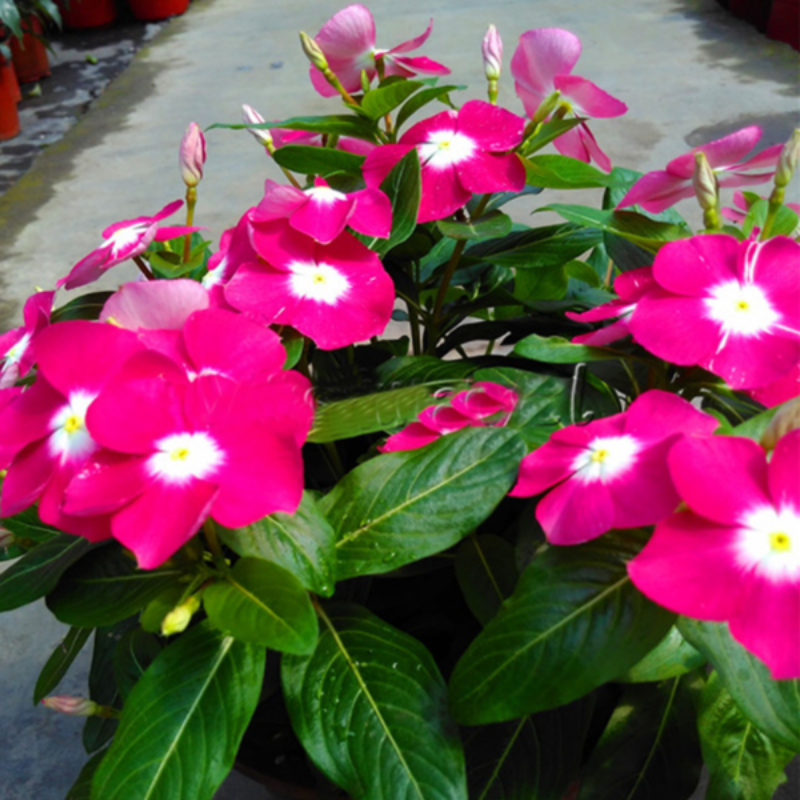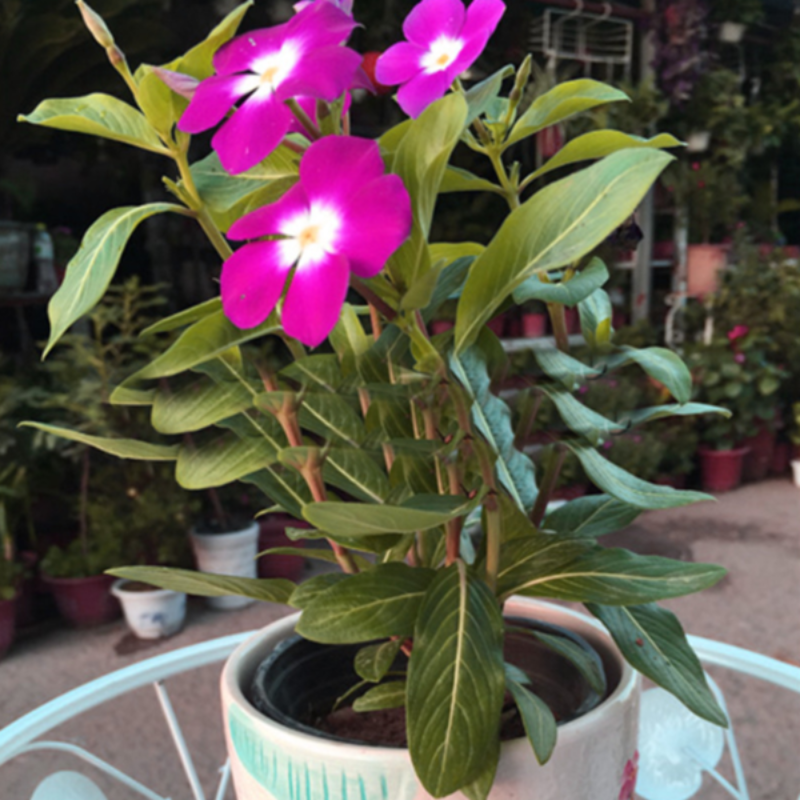- Species and varieties: Vinca, commonly known as periwinkle, belongs to the Apocynaceae family. The most common species include Vinca minor (lesser periwinkle) and Vinca major (greater periwinkle). The purple variety is often referred to as Vinca minor 'Atropurpurea' or Vinca major 'Variegata'.
- Hybrid or heirloom: Vinca seeds are typically heirloom varieties, meaning they are open-pollinated and can be saved and replanted each year. However, some hybrid varieties may also be available, offering specific traits such as improved disease resistance or unique flower colors.
- Pruning and training: Vinca requires minimal pruning. However, to maintain a tidy appearance and encourage new growth, you can trim back the stems after flowering. Regularly removing dead or damaged stems will also help keep the plant healthy.
- Fertilization needs: Vinca is not particularly demanding in terms of fertilization. A balanced, slow-release fertilizer applied in the spring can support healthy growth. Over-fertilization should be avoided as it can lead to excessive foliage growth at the expense of flowers.
- Hardiness zones: Vinca minor is hardy in USDA zones 4-9, while Vinca major is hardy in zones 7-9. These plants are quite adaptable and can thrive in a range of conditions.
- Climate requirements: Vinca prefers a temperate climate with moderate humidity. It can tolerate partial shade to full sun, though it thrives best in partial shade. The soil should be well-draining, and the plant is relatively drought-tolerant once established.






